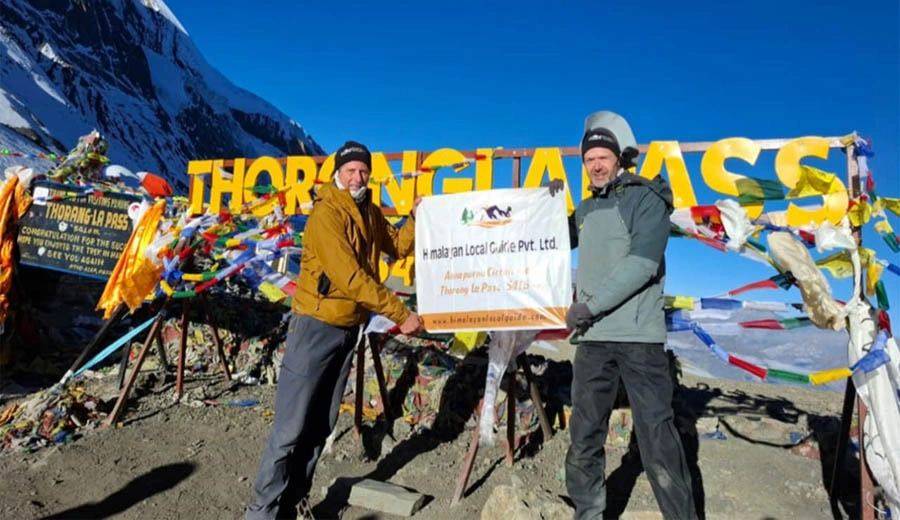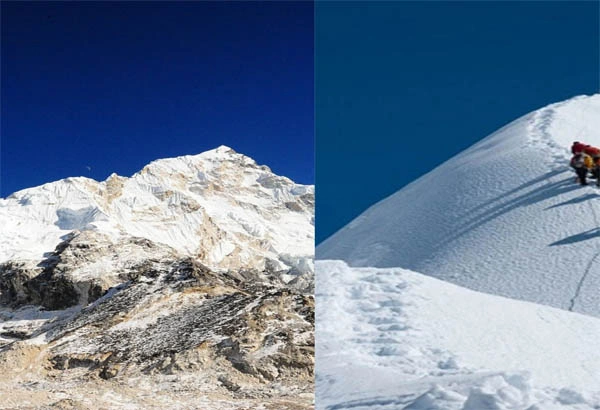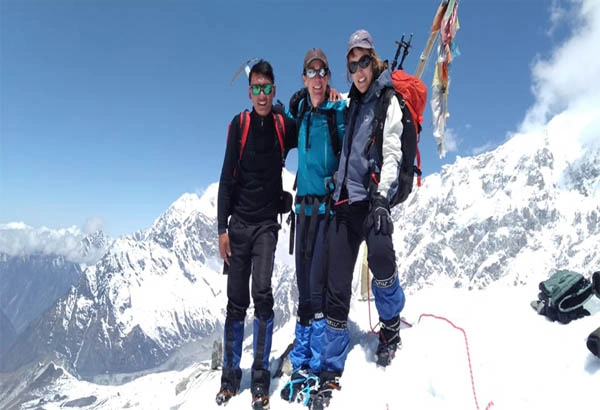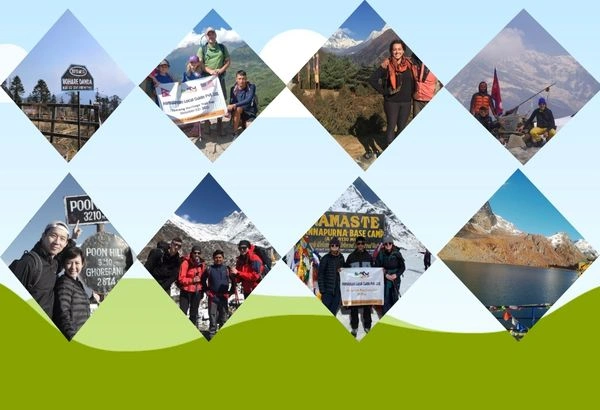Explore the essential strategies for preparing for the Annapurna circuit trek, guaranteeing an inspiring journey amidst eye-catching landscapes and local cultural encounters.
Passing through the demanding yet spectacular landscapes to reach amidst the Himalayas and get a delightful view while reaching the top of the world high passes is a stunning trekking route like the Annapurna circuit trek. However, along the trekking route with the rewards of the journey come challenges that can be affected if you are not prepared to take them head-on.
Therefore, Preparation is the most important key to a winning and enjoyable journey, particularly for beginner to intermediate trekkers. In this blog post, we are clearing how to prepare for the Annapurna Circuit trek and find the way demanding and magical of this beautiful journey.
Highlights of Annapurna Circuit Trek
The Annapurna Round trek is filled with remarkable adventures and experiences. It’s one of the most popular for its spectacular vistas and various experiences. The diversity in scenery and cultural experiences make this trek extraordinary.
- Crosses the Thorong La (5416m), is one of the world’s highest pass.
- Explore the ancient Buddhist monasteries and holy temples of Muktinath.
- Enjoying natural hot springs at Tatopani Village.
- Beautiful popular peaks like Annapurna I, Annapurna II, Annapurna III, Gangapurna, and Dhaulagiri.
- Get experienced with the diverse landscapes and unique culture during the trek.
Duration of Trek:
The Annapurna circuit trek typically takes around 13 to 21 days to complete. However, it might depend on your time frame and the specific route you choose. The trek starts from Besishar, about a 7 to 8-hour drive from the Capital city of Kathmandu, Nepal, and ends at Jomsom or Nayapul.
Recommended Month for Nepal trekking
For the best trekking experience in Nepal recommended months trekking to the Annapurna circuit are:
- March, April, and May (Spring).
- September, October, and November (autumn).
Both seasons offer the most favorable weather conditions, guaranteeing clear vistas, mild temperatures, and an exciting trekking sky.
Annapurna Trekking Permits and Regulations for Annapurna Circuit Trekking
To trek the Annapurna Circuit, trekkers should obtain specific permits to ensure submission with local protocols and support the management of the trekking area. The main permits required are:
- ACAP (Annapurna Conservation Area Permit): This permit is required for entry into the Annapurna round trek, which includes the entire Annapurna circuit trek. The Annapurna Permits help the conservation of the region's natural and cultural resources and are crucial for trekkers to support supportable tourism observes.
- TIMS Card (Trekkers Information Management System): The TIM card is a required permit for all travelers/trekkers in Nepal. However, it supports managing and observing trekking activities and ensuring travelers' safety.
Physical Fitness and Training
Embarking on the Annapurna circuit trek needs good physical fitness and stamina. The trek includes uphill and downhill through various terrains, and passing the high altitude. To ensure a complete and pleasant trek, you need to prepare your body through regular training and some exercise.
Cardiovascular Training
Involve in activities like morning walks, hiking, running, cycling, and swimming to build stamina and cardiovascular strength. Ambition for at least 25 to 30 minutes of cardio exercise 4 to 5 times a week.
Strength Training
Emphasis on strengthening your legs, core, and upper body. Exercises such as squats, lunges, step-ups, and core workouts improve constancy and strength essentials for trekking.
Altitude Training
If you have enough time, spend time at altitudes. You can do acclimatization at high altitudes. It helps your body to reduce oxygen levels.
Long Hikes
Preparation with long hikes carrying a backpack to simulate trekking conditions. Slowly increase the distance and weight to build strength and get accustomed to carrying trekking equipment.
Essential Trekking Gear and Packing List
Packing essential trekking equipment is key to a successful trekking experience. The trekking equipment ensures comfort, safety, and preparedness for challenging weather conditions.
Body Clothing
Sleeping bag, Down Jacket, T-shirt, Long sleeved Shirts, Fleece Jacket, Warm Wool Sweaters, Waterproof and windproof jacket, Trekking Paints with folding,
Head and Face
Sun hat, Wool or fleece hat, Headlight, sunglass, sunscreen 50, face wipes, and towel.
Footwear
Trekking boats, ¾ pairs preferably cotton socks, crampons, and one pair of extra sports shoes.
Necessary Gears
Gaiters just in case of snow, Thick Gloves, a Big rucksack above 50 L, a Waterproof bag cover, a Raincoat, a Trekking pole, a Laundry Shop, Shampoo, a Toothbrush, Toilet Paper, Bottle for drinking water, Pen and Note Book, Copy and Guide Book, Camera, Battery Charge, Memory Card, Cell phone and charger.
First aid kit
Diamox, cotton bandages, paracetamol, painkillers, water purified tables, Lozenges, Elastic bandages, Moleskin, and sling.
Altitudes sickness and prevention
Altitude sickness is a common concern on the Annapurna circuit trek due to the important altitude changes. Considering its symptoms and prevention techniques is essential for a safe trek.
Symptoms of High altitude sickness
High altitude sickness is common symptoms including headaches, nausea, dizziness, fatigue, and shortness of breath. Simple cases can lead to AMS (Acute Mountain Sickness) high altitude sickness.
How to prevent High altitude sickness?
Gradually allow time for your body to adjust to higher altitudes by following the recommended program including rest day and acclimatization day.
Stay Hydrated
Drink plenty of water to help your body cope with the altitude.
Avoid Alcohol
We do not recommend you drink alcohol when you reach an altitude of around 3000 meters. After high passes and when you reach less than 2000 meters you can drink alcohol. Alcohol can exacerbate systems of altitude sickness, so it's best to avoid it.
Frequently Asked Questions for Annapurna Circuit
Why is the Annapurna Circuit trek popular in the Annapurna region?
The Annapurna circuit trek is one of the most popular trekking routes in the Annapurna region of Nepal. However, this trek route takes you through the Annapurna massif, offering various landscapes, Gurungs Tibetan cultural experiences, and vistas of the Himalayas. The trek typically takes approximately 13 to 21 days, depending on your time frame and programs.
When is the best time to trek the Annapurna Circuit?
The best time to trek the Annapurna circuit is during the spring and autumn season. These periods offer stable weather, clear skies with magical Himalayas ranges, etc.
What is the highest point of the Annapurna Circuit?
The highest point of the trek is Thorong La Pass, which is located at 5416 meters above sea level.
Is the Annapurna Circuit trek challenging in the Annapurna Region?
Yes, it is a challenging trekking route in the Annapurna region. However, you need good predictions for this trek. Because it is a high-altitude trek route.
Do I need a guide for the Annapurna circuit trek?
You can do a solo trek also possible, but we do not recommend to Annapurna circuit trek solo. Because there are several trekking routes as well, it is high passes trek in the world, you might have high altitude sickness. If you take a Guide, the Guide will support you in any of your bad conditions. We recommend that you take a guide and you can complete the Annapurna circuit trek easily.




